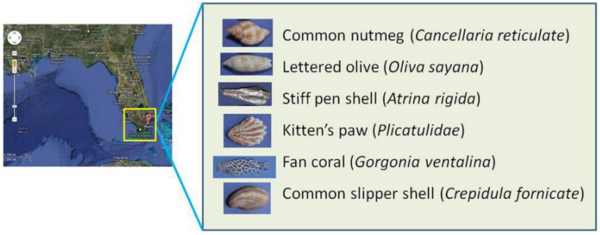Effect of pH Change on Exoskeletons of Selected Saltwater Organisms Which Rely on Calcium Fixation
(1) Coral Gables Senior High, Coral Gables, Florida, (2) Florida International University, Miami, Florida
https://doi.org/10.59720/13-030
The projections for rising atmospheric carbon dioxide concentrations indicate that the pH levels of the ocean surface could decrease by 0.3-0.4 units by the end of the 21st century. The objective of this research was to evaluate the effect of pH on the exoskeletons of six aquatic organisms commonly found in South Florida coastal waters. The exoskeleton samples studied were from the common nutmeg (Cancellaria reticulate), lettered olive (Oliva sayana), stiff pen shell (Atrina rigida), kitten’s paw (Plicatulidae), fan coral (Gorgonia ventalina), and common slipper shell (Crepidula fornicate). The exoskeleton samples were exposed to saltwater (34% salinity) at pH levels ranging from 8.3 to 6.0 for 5 days. The changes in the masses of the samples before and after exposure were compared. We normalized the data in reference to the observations at pH=8.3, which is the current pH level of the ocean surface. The fan coral had the highest percent mass loss, which increased with decreasing pH until pH 6.5. Exoskeleton samples from the stiff pen shell were not affected by the pH changes. Exoskeletons from the common nutmeg, lettered olive, and common slipper shell had similar responses to pH changes with relatively small changes in mass. Exoskeletons from the kitten’s paw had significant mass loss at lower pH conditions. The research results show that as ocean acidification increases, the exoskeletons of marine organisms will be affected. Some organisms, such as the fan coral and kitten’s paw, may lose their exoskeletons. Other organisms that rely on the marine organisms with exoskeletons for shelter and food could also be affected.
This article has been tagged with: